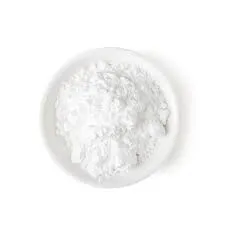Chemicals Used in Water Treatment
Water treatment is a critical process that ensures the safety and quality of drinking water, as well as the effective management of wastewater. Various chemicals are employed at different stages of water treatment to remove contaminants, disinfect water, and enhance the overall efficiency of the treatment processes. This article delves into some of the key chemicals used in water treatment.
1. Coagulants and Flocculants
Coagulation and flocculation are essential steps in water treatment that aid in the removal of suspended particles and colloids. Coagulants, such as aluminum sulfate (alum) and iron salts (ferrous sulfate or ferric chloride), are added to water to destabilize these particles, allowing them to clump together to form larger aggregates known as 'flocs.' Once flocculation occurs, these larger particles can be removed more easily through sedimentation or filtration. Flocculants, like polyacrylamide, are often used in conjunction to enhance the settling of these flocs.
2. Disinfectants
The disinfection of water is crucial to eliminate pathogens and prevent waterborne diseases. Chlorine is one of the most commonly used disinfectants, effective against a wide range of microorganisms. It can be applied in various forms, including chlorine gas, sodium hypochlorite, and calcium hypochlorite. However, chlorine can react with natural organic matter to form disinfection byproducts (DBPs), some of which are harmful. Consequently, alternative disinfectants such as ozone and ultraviolet (UV) light are also employed. Ozone is a powerful oxidant that can inactivate viruses and bacteria without leaving residual compounds in the water. UV disinfection offers a chemical-free method to disinfect water through exposure to UV light but requires clear water to be effective.
3. pH Adjusters
Maintaining the appropriate pH level is essential for effective disinfection and overall water quality. Calcium hydroxide (lime) and sodium carbonate (soda ash) are commonly used to raise the pH of acidic water, while sulfuric acid is used to lower the pH of alkaline water. Proper pH control enhances the efficiency of coagulation and disinfection processes.
what are the chemical used in water treatment

Corrosion of pipes and infrastructure can lead to the leaching of harmful metals and contaminants into the water supply. To combat this issue, corrosion inhibitors such as orthophosphate and silicates are introduced into the water. These chemicals form a protective layer on pipe walls, reducing the rate of corrosion and prolonging the lifespan of water distribution systems.
5. Nutrients and Amendments
In some cases, particularly in the treatment of wastewater, the addition of nutrients such as nitrogen and phosphorus may be necessary to facilitate biological processes. These nutrients support the growth of microorganisms in biological treatment systems, which break down organic matter and enhance wastewater treatment efficiency.
6. Activated Carbon
Activated carbon is employed for its ability to adsorb a wide array of contaminants, including organic compounds, chlorine, and taste and odor-causing substances. It is commonly used in both drinking water treatment and the polishing stage of wastewater treatment to improve the overall quality of the water.
In conclusion, various chemicals play vital roles in water treatment processes, each addressing specific challenges in achieving safe and clean water. From coagulants and disinfectants to pH adjusters and corrosion inhibitors, these chemicals work together to ensure that water supplied to communities is free from harmful contaminants and safe for consumption. Continuous research and development in this field are essential to adapt to emerging contaminants and to improve water treatment efficiency.

